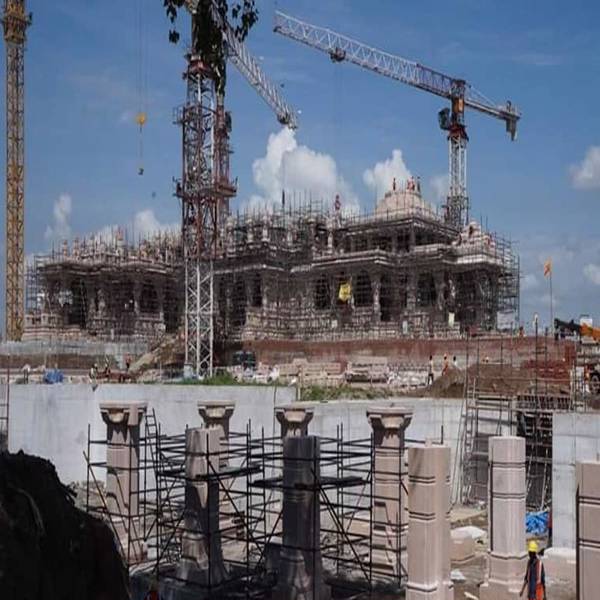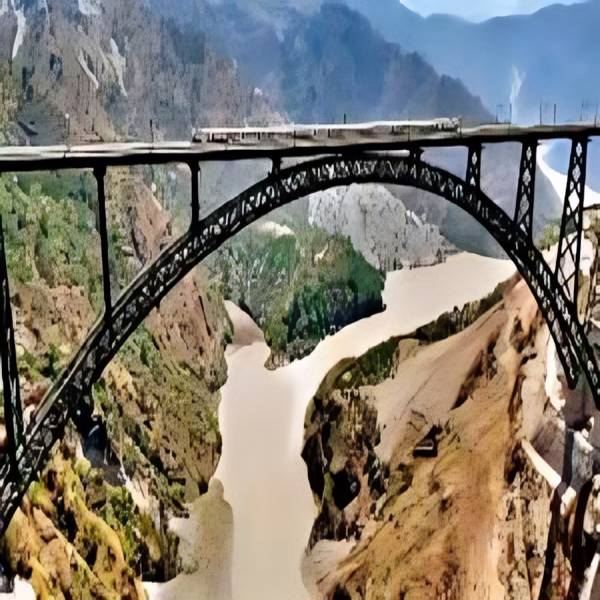Immersed in nature, the Ram temple complex will offer a sanctuary with expansive green spaces encompassing 70% of the land. Moreover, will also be a model of being self-contained with its own water and wastewater treatment plants, a fire department, and an independent power feed.
The majority of the 70-acre complex, roughly 40 acres will be dedicated to green space mentioned by Ram Temple Trust general secretary Champat Rai.
Immense yourself in the verdant embrace of the Ram temple complex, emphasizes the lushness of the green area during the acknowledging presence of denser, ancient trees with dappled shadows on paths, different areas are so lushes sunlight peek, creating a truly mystical atmosphere.
Self-sufficient visuals, where over 600 existing trees, the complex will boast its own sewage and drainage system, a testament to its “atmanirbhar” spirit. Functioning as a fully self-contained this won’t rely on municipal resources as this complex will boast its infrastructure. Even fire brigade with on-site water reserves, the complex stands as a beacon of independence.
Eco-friendly and independent, complex features are two on-site sewage treatment plants, In case of emergencies, a resident fire brigade can tap into an underground water reservoir, ensuring complete self-reliance. The inaugural phase of the temple nears its culmination with Prime Minister Narendra Modi set to perform the “Pran pratishtha” ritual for the Ram Lalla idol on January 22nd. With saffron flags dancing in the breeze and chants echoing through the air, Ayodhya prepares for a moment etched in history. This momentous ceremony will witness the Prime Minister’s enshrinement of the revered idol, signifying a historic milestone in the temple construction’s saga. For centuries, whispers of devotion have echoed through these hallowed spaces, their hopes and longing interlacing like threads in a vibrant tapestry. A dedicated pathway has been built within the complex for emergencies.
Also read: Samsung’s latest budget 5G smartphones
Access to the temple will be through the eastern entrance, with a dedicated southern exit for orderly flow. The temple’s magnificent form will gradually reach its full glory, ascending to three levels designated as ‘G 2’, mentioned by Champat Rai. Moreover, devotees will ascent a sacred climb of 32 steps preceding the encounter with the divine within the temple’s heart.
Stretching a majestic 380 feet east to west and 250 feet north to south, towering 161 feet towards Heaven each floor is breathtaking feet tall, supported by forests of 392 pillars and adorned with 44 elaborate gates. An unusual architectural flourish, the temple will also boast a “persona” rectangular ambulatory pathway seen mostly in south Indian temples.
The complex will boast a lift and two ramps at the entrance, easy access for persons with disabilities. Includes a dedicated pilgrim facilitation complex, complete with a healthcare center, and convenient restrooms, to cater to the needs of 25,000 visitors before their ‘darshan’.
Breaking with north Indian tradition, the complex will feature a “persona” a 14-foot wide, 732 perimeter path characteristic of the south.
Percota: It will become a variant sanctuary, Each corner of this one is dedicated to the sun god, another to maa Bhagwati, one to lord Ganesha, and the last one to lord shiva. A tapestry of faith will unfold complex, with shrines honoring Maa Annapurna in the north, lord hanuman in the south, and seven other figures integral to lord Ram’s story such as (Maharishi Valmiki, Maharishi Vashisht, Maharishi Vishwamitra, Maharishi Agastya, Nishad raj, Mata Shabri, Devi Ahilya).
Majestic tribute to loyalty and sacrifice, a statue of Jatayu now graces the holy grounds of Kuber Tila. New Jatayu statue watches over kuber Tila. The celestial window for the consecration ceremony as determined by astrological calculations, opens at noon and closes fifteen minutes later. A narrow window of auspiciousness, spanning from noon until a quarter past the hour.
Between the golden chimes of noon and a whisper of the quarter-hour will pave the way for the temple’s consecration. In a watershed moment that resonated through India’s history, Supreme court in 2019 delivered a verdict that brough closure to century -old dispute , paving way to construction of Ram temple. After resolving Ram Janambhoomi -Babri Masjid conflict and allowing temple’s construction.



